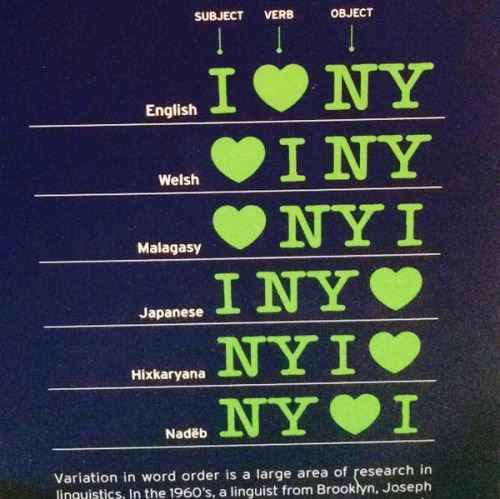2. Defining Linguistic Complexity
Linguistic complexity is a complicated aspect in Linguistics. Till now, scholars have been unable to give this term a proper definition.
The term complexity in linguistics has been used to refer to aspects of a language that make communication easier or simpler when speaking or to describe features of linguistic production (Palloti, 2014).
In other cases, some scholars claim that defining linguistic complexity is difficult due to the nature of the subject that demands it can only be defined when considering from whose perspective the complexity of a language is to be studied.
As a result of the difficulty in defining linguistic complexity, this wikichapter will instead aim to introduce the various models proposed with which one can study and begin to understand the concept of linguistic complexity.
The models described in this section are based on models lectured on by Osten Dahl, Stockholm Univeristy. Due to the problems with defining linguistic complexity above, linguists have yet to arrive at a distinct model. The particular one that will be elaborated on below has been selected based on the way it accounted for the multi-faceted nature of this topic.
[Back to Table of Contents]
2.1 Objective Complexity VS Agent – Related Complexity
2.1.1 Objective Complexity
Objective complexity views complexity as an objective property of something. As if to say that complexity is characteristic of the object. This view is most common in information theory and when dealing with systems. In this view, it is hard to strictly define what complexity really is.
[Back to Table of Contents]
System complexity is useful in linguistics when discussing language systems as a whole.
For example, when comparing the French language system with the English Language system, in terms of the use of articles, French is more complex.
In English, the article ‘an’ is placed before nouns beginning with a vowel and ‘a’ is used anywhere else. In French, ‘les’ is used before plural nouns, ‘la’ before feminine nouns, ‘l’’ before vowels and ‘le’ everywhere else.
In linguistics, system complexity would then help us in estimating how much, content wise, a person is required to learn to achieve proficiency in that language. But even here then, we can see a need to pick out specific aspects to judge complexity and that the system approach might not be as wholesome as it seems.
Structural complexity is useful in linguistics when we take on a more micro approach and aim to study the complexity of the structure of the language ie. utterances and sentences.
For example in studying the word order of languages. For example in English we use a Subject (S) – Verb (V) – Object (O) structure. Japanese on the other hand, uses SOV structure. The image below demonstrates what is meant by word order is various languages.

Here we see the debate that suggests linguistic complexity is dependent on from whose perspective it is being spoken about play out. From the perspective of a native English speaker, English or another SVO language such as Spanish, will be less complex than Japanese. For native Japanese speakers however, these would be seen as complex and other SOV languages like Persian, might be seen as less complex.
2.1.2 Agent – Related Complexity
Agent related complexity is the view of looking at linguistic complexity from the person trying to use a particular language. There are several factors in assessing agent-related complexity; mainly cost, difficulty and verbosity.
Cost very simply refers to literally the cost of learning a new language such as time and money. Cost must also be seen in relation to benefit. This is very important in understanding agent related complexity.
For example, in Singapore, the cost of learning Italian may be high as it will require a lot of time and energy. The benefit is also low to the common man as they are unlikely to get much opportunity to actually speak Italian beyond the classroom. However, for a Singaporean student going on exchange to Italy or migrating there, the cost benefit is much higher and from their point of view the cost will seem lower. To the first person the value of time will be seen as high due to the low rewards but to the second, the value of time will be seen as less expensive. Hence cost as well is a very subjective verb and cost can range depending on what the person in question determines as important. If the person places more importance on time than money, and the language is easy to learn though it costs more, it will be seen as less complex to them. This again reflects the problematic subjective nature of the agent-related model.
Difficulty like complexity is hard to define as well as it largely depends on the individual’s perspective. One way of judging difficulty is by seeing if the attempts at learning a certain aspect of a language sees a larger number of failures than successes. This example is just one way of measuring difficulty. Difficulty like cost, seen above, and many other terms in the agent related model is extremely subjective and Dahl has not given a concrete definition to these. Thus it appears as these must be define in relation to the individual.
From a more purely linguistic point of view, we could also judge a language as more difficult if its language structure and system differ greatly from any of the languages that a person is native to or proficient in.
In his model, Dahl defines Verbosity as referring simply to the number of words required by a language’s grammar to convey a piece of information.
For example, in Tok Pisin ‘mi no harim tok bilong yu’ means ‘I do not understand’. In Spanish, it would be ‘no entiendo’. Here Tok Pisin is more verbose than English and people might then view Spanish as easier and less complex.